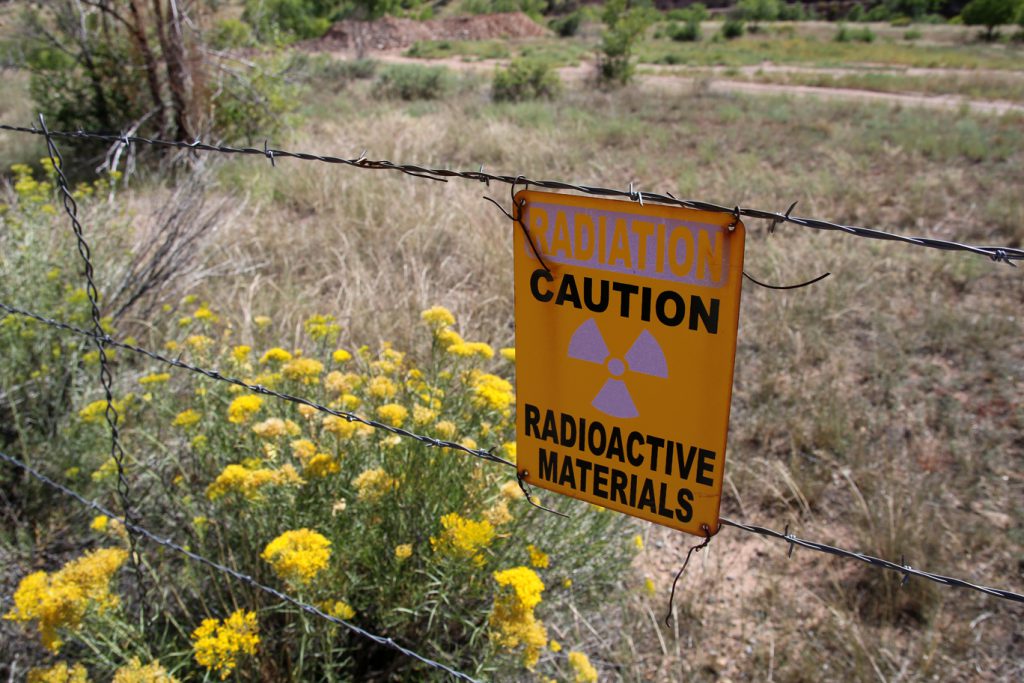Insight article

Welcome to Uravan
Welcome to Uravan, Colorado, population zero.
No one lives here anymore. It’s not because they’ve slowly moved away. There used to be hundreds, maybe thousands of people here, a school, a post office, a baseball diamond, and – the linchpin of it all – a mine. But the mine closed, and with it, the town.
A wire fence lined with sun-faded biohazard warning signs is the only clue to the historical importance of this place. For decades, miners drew uranium and vanadium out of the ground, hence the town’s name. Its first use was as a yellow pigment. But when Manhattan Project scientists were developing the world’s first atomic weapons, the ones that would later be dropped on Hiroshima and Nagasaki in 1945, this is where they got their uranium.
Amidst the sound of crickets and wind through the grass, and the very occasional car winding through this sun-baked Rocky Mountain canyon, it’s tough to imagine the destructive power wrought from the ground beneath your feet.
Though I grew up just an hour down the highway, I first learned about this place from an article in the New Yorker, which article points out the powerful irony of how Hiroshima and Nagasaki have been completely rebuilt – and that it’s Uravan that’s now destroyed, fenced off, unsuitable for human habitation.
After World War II, Uravan continued to produce uranium through the Cold War, and then for the nuclear power boom in the 60s and 70s. But by the late 70s, the uranium market had slowed down and shifted largely to Canada, and the adverse health effects of uranium exposure started coming to light. The cleanup began in 1986, bulldozing all the buildings, removing mine tailings, and burying the remains of the town with thick layers of dirt.
The region’s history and mineral richness has come under new consideration lately as the rare earths market heats up again and companies have explored re-opening the mines. Predictably, this prospect has pitted NIMBYs against those who for decades have been victims of the region’s limited economic development. Mining companies claim that their operations have improved massively, mitigating the human and environmental threats of decades past, and that may well be true. But the degree of nostalgia among those in the region for a time when cancer and early death decimated the local population has come as a surprise to many. As a new documentary, Uranium Drive-In, illustrates, many locals seem proud of the region’s past, and eager to see the next chapter of the same story.
Why? I’m not so sure. I suspect part of it has to do with regaining a sense of regional identity, even a unique and historically important one, albeit one that has been so distinctly dangerous. A community that accepts, even prizes, such an inherently hazardous activity as uranium mining takes on a unique regional version of American exceptionalism.
The other lesson here, perhaps, is the crucial importance – and difficulty of attaining – empathy for the other side. Those who want to protect the landscape and those who want to regain economic vitality and regional identity hardly understand each other’s points of view. In conflict, we look for common ground. But here, it’s as if the common ground itself were poisonous.
